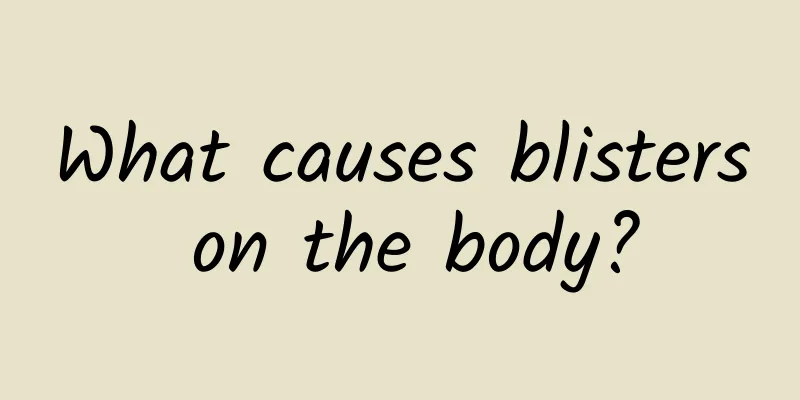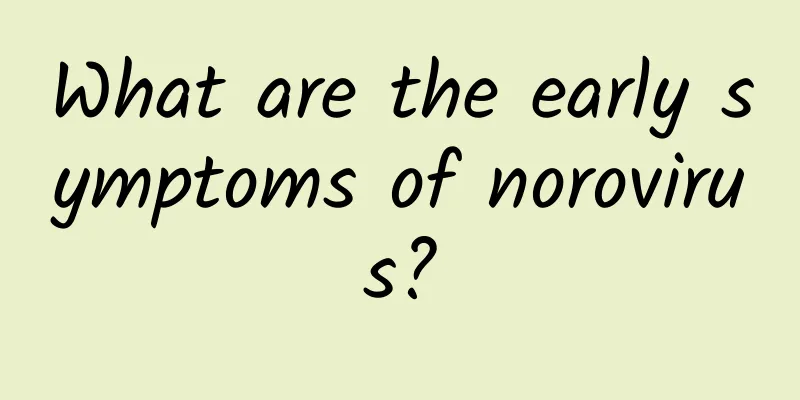What causes blisters on the body?

|
In life, some people will develop skin problems, herpes is one of them. People who have herpes will feel extremely painful. Especially herpes that grow on the body, the types are more complicated and the causes are also more complicated. However, if you want to receive timely treatment, you still need to understand the specific causes of herpes. So what causes blistering rash on the body? Our skin is the first line of defense in our system and is subjected to various challenges from visible and invisible bacteria and fungi every day. Some of these challenges are blocked outside the body without our knowledge, while others invade the body and cause disease. Herpes is a common symptom. Herpes is a viral skin disease caused by the herpes virus. The dangers of having herpes are as follows: 1. A few days before the rash appears, there is often fever, fatigue, loss of appetite, local lymph node enlargement, allergy or neuralgia in the affected area, but the symptoms of herpes virus infection may also have no prodromal symptoms. The symptoms of herpes virus infection manifest as local skin flushing, followed by the appearance of clustered millet-sized papules, which quickly turn into blisters with clear blister fluid, tight and shiny blister walls, and a red halo around them. 2. The symptoms of herpes virus infection are distributed along the cutaneous nerve on one side, arranged in a belt-like shape, and the skin between each cluster of blisters is normal. The lesions generally do not extend beyond the midline. 3. Neuralgia is one of the characteristic symptoms of herpes. Symptoms of herpes virus infection may appear before the rash or accompany the rash. Children often have mild or no pain, while elderly patients have severe pain and often have long-term neuralgia after the damage subsides. 4. Herpes develops rapidly, and the symptoms of herpes virus infection are acute, with the whole course lasting about 2 weeks. After herpes is cured, temporary pigmentation may remain, but if there is no secondary infection, there will generally be no scars. Shingles is an acute herpetic skin disease that is more common in adults, especially the elderly. Most patients do not relapse after recovery. This disease is prone to occur in the trunk, so it is also called "snake sores", "waist-wrapped fire sores", "fire belt sores", "steamer belt sores", "snake sores", etc. in traditional Chinese medicine literature. Western medicine believes that this disease is caused by varicella-zoster virus infection. Although shingles often occurs in the chest and flanks, it can also occur on the head and face. While patients experience obvious pain, they also experience local redness, swelling, blisters, scabs, and pigmentation. Especially in the elderly or weak patients, obvious neuralgia may occur in the later stages of shingles, which greatly affects their quality of life. 1. Causes Shingles is a viral infectious disease caused by the varicella-zoster virus (VZV), so it is similar to chickenpox. Many people often confuse shingles with chickenpox. VZV is a DNA virus that enters the human body mainly through the upper respiratory tract and causes disease. Like many viral diseases, it needs to reach a certain number before it will cause an illness, so many patients show symptoms of chickenpox or latent infection after the first infection with the virus. When the virus is free in the skin neurons, it can cause illness when stimulated by various factors. Common triggers before the onset of the disease include excessive fatigue, colds, decreased immunity, mental stress, serious diseases, trauma, etc. 2. How to treat There are many treatments for shingles, and different treatments are chosen according to the stage of disease progression and specific symptoms. In general, the treatment of herpes zoster mainly uses a combination of oral and topical treatments. Oral antiviral drugs include: acyclovir, valacyclovir, ribavirin, interferon, adenosine, etc.); topical drugs include: phthalide cream, 1% ichthyol calamine lotion, ganciclovir ointment, etc. If there is ulceration, choose 1% gentian violet solution; for facial herpes zoster, choose 3% boric acid solution or gentamicin saline wet compress; for ocular herpes zoster, choose 0.1% to 0.5% herpes eye drops. For people with more severe disease, corticosteroids are given. If patients with shingles also have neuralgia, they will also use analgesic drugs, generally codeine, phenytoin sodium, carbamazepine, etc. If there is still no obvious effect after taking the medicine, nerve block will be used to relieve the pain. In addition, physical therapy can be used in combination to reduce inflammation, relieve pain and shorten the course of the disease. Common physical therapies include ultraviolet irradiation, helium-neon laser irradiation, audio electrotherapy, and moxa stick moxibustion. 3. Clinical manifestations It is more common in adults, and the incidence rate increases with age. The disease can occur in all seasons, but is more common in spring and autumn. Before the onset of the disease, prodromal symptoms may include general discomfort, fatigue, low fever, poor appetite, sensitive skin in the affected area, or burning and stinging pain. The rash may appear simultaneously with the pain or may be delayed for several days. The most common sites are the chest and flanks, neck, head and face, and lumbar and sacral regions. In the early stage of the disease, red maculopapules first appear on the affected skin, which quickly turn into blisters ranging in size from millet to soybean, clustered together without fusion, like beads, arranged in bands, with normal skin between the blisters. The blisters are surrounded by red halos, the blister fluid is clear, and the blister walls are tense and shiny. It usually occurs on one side of the body, distributed along the cutaneous nerves, and generally does not exceed the midline. Some patients may have no skin lesions, only local tingling, or slight redness, without obvious blisters; some severe cases may develop bullae, blood blisters, and even necrosis. Pain is the main symptom of this disease, which may occur before the onset of the disease or at the same time as the skin lesions. The severity of the pain varies from person to person. Children or young people experience milder pain; the elderly and frail patients experience severe pain. Some patients may still have stubborn neuralgia after the skin lesions disappear, which may last for months or even longer. If the disease occurs in the head and face, such as the eyes and ears, the condition is often more serious, accompanied by swelling and pain in the nearby tuberculosis; it can also cause visual and hearing damage. 4. Daily Care 1. Combine work and rest, adjust your mood, and avoid liver depression and qi stagnation that aggravate the condition. 2. The diet should be light, avoid spicy, fatty, sweet, greasy food and fishy and seafood food, and eat more fresh vegetables and fruits. 3. Underwear should be loose and soft to reduce friction; avoid washing local parts with hot water. 4. Skin lesions should be kept dry and clean to avoid infection; avoid using highly irritating ointments to prevent the skin lesions from expanding or worsening the condition. How is shingles treated? Through the above brief introduction, I believe everyone has a certain understanding of the treatment and causes of shingles. There are many treatments for shingles, and the best one is the one that suits you. Therefore, once relevant symptoms appear, it is best for you to find a regular hospital and receive scientific treatment under the guidance of a professional doctor. |
<<: What is the best way to soak water for internal heat?
Recommend
The pros and cons of toe tapping
Tapping the toes is very good for health and help...
What causes pharyngitis?
Many diseases may cause new diseases as the virus...
Will diabetic legs swell? Why?
Swelling of the legs is a common symptom in diabe...
Can pregnant women drink mung bean sugar water?
There is no problem for pregnant women to drink s...
Maxillary sinus surgery sequelae
Our nose is composed of many parts, and the maxil...
Unspeakable discomfort in the lower body
Unspeakable discomfort in the lower body may be c...
What causes swollen tonsils?
Enlarged tonsils are an abnormal disease phenomen...
Can thin and soft hair be cured?
Thin, soft hair is a common hair symptom, which m...
Immunohistochemistry of gastric stromal tumors
It is well known that gastric stromal tumor immun...
What are the side effects of Schisandra?
Although Schisandra chinensis has a relatively hi...
What is the reason why men often have yellow urine?
Under normal circumstances, urine is light in col...
What causes excessive sweating in summer?
We all think that sweating in summer is a normal ...
What causes leg pain when walking for a long time?
No matter who we are, we cannot go anywhere witho...
What are the effects and functions of Asarum?
As a traditional Chinese medicine, asarum is stil...
Summer Health Tips
The weather in summer is relatively hot, which ma...









